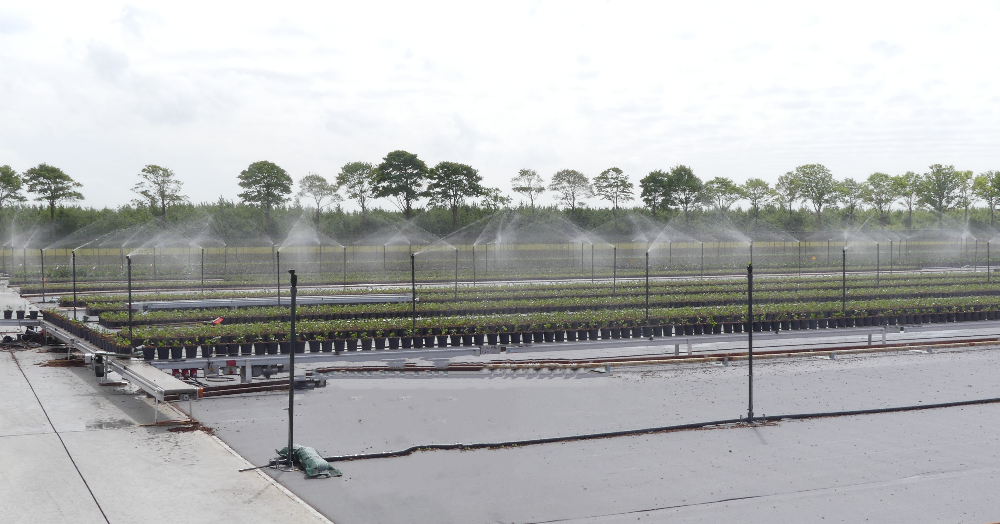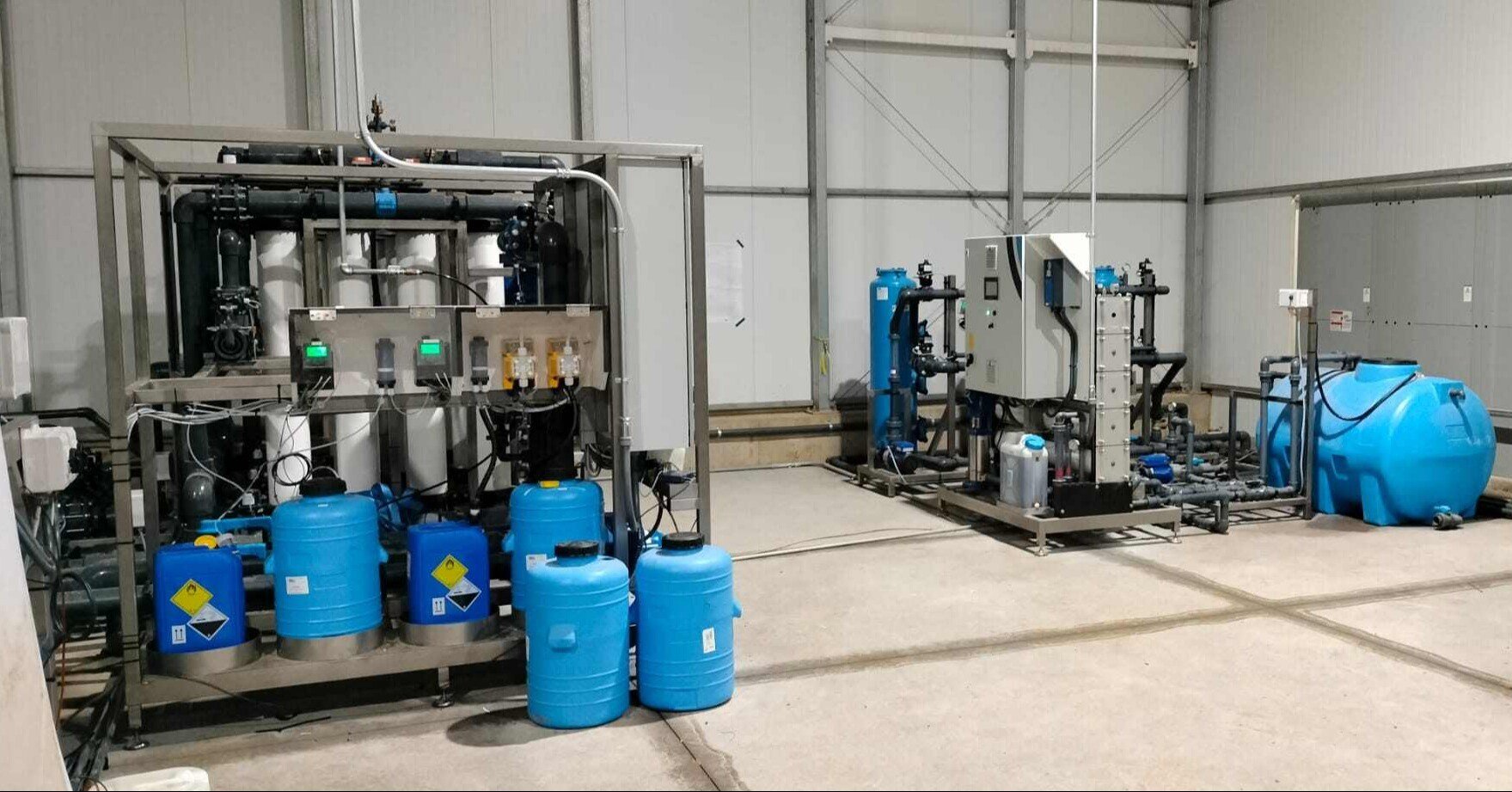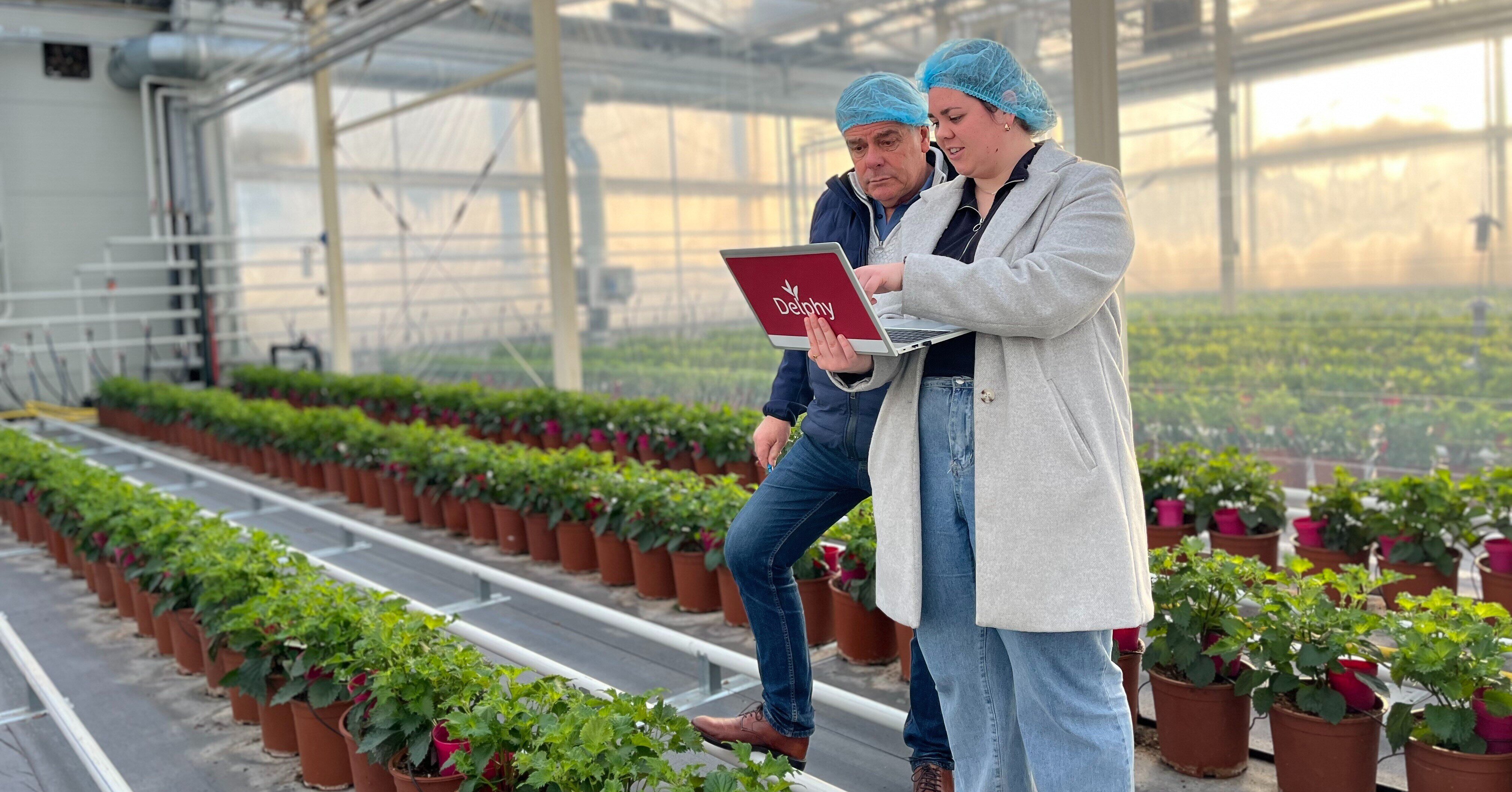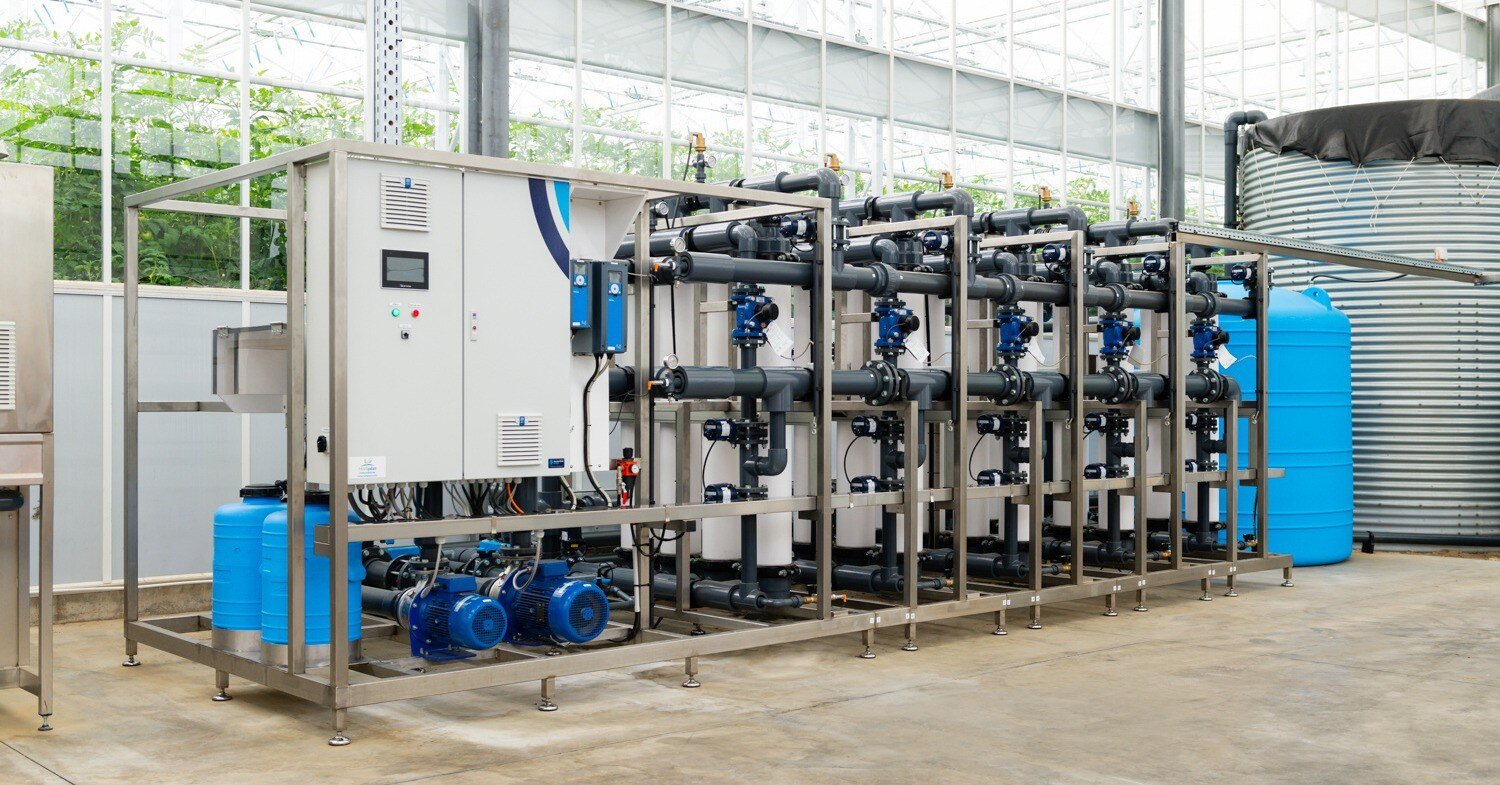- Prefer direct contact? +31 (0)79 593 38 00
- Language: English
3 Irrigation systems for nurseries

3 Irrigation systems for nurseries
Mar 19, 2024 8:59:42 AM
The choice of irrigation system can significantly impact your operations and product quality, so it's crucial to choose the right one. We'll break down the three main irrigation systems for nurseries, including their pros and cons.
1. Sprinkler Irrigation
Overhead sprinkling is the most common way to irrigate in shrub and perennial operations. This method is relatively inexpensive, and automation - like using forklifts or conveyor belts - is straightforward. Nurseries also often use this irrigation system in early spring for frost protection. Sprinkling creates a layer of ice around the plants, protecting them from frost.
However, overhead watering can also have disadvantages, especially for flowering crops. When the plant gets wet, it increases the risk of diseases. Large leaves sometimes cause water to fall onto the ground rather than reaching the plant's roots, resulting in uneven watering. Wind can also be a factor: it can scatter the water, leading to uneven distribution. Additionally, some plants may receive excess water from multiple sprinklers due to overlapping coverage. This also contributes to uneven watering.
2. Ebb and Flow System
Watering using an ebb and flow system can be done in various ways. The floor with the ebb and flow functionality from ErfGoed is widely used. In all cases, water comes from below and drains through the floor after watering.
A significant difference between the ErfGoedFloor and other ebb and flow systems lies in how the water rises. With an ErfGoedFloor, the water evenly fills the layer of stones and then rises above the ground cloth. This ensures that water reaches everywhere simultaneously, resulting in more uniform growth. This whitepaper delves deeper into the pros and cons of various ebb and flow systems.
More information about Ebb and Flow Systems and Greenhouse Floors? Click here.
3. Boom Irrigation
Irrigating using boom systems ensures precise watering. All plants receive water evenly, and extra water can be provided in specific areas. Since the boom comes close to the plants, wind has minimal effect. Additionally, this method makes it easy to automate internal processes. However, this watering method is relatively expensive. Also,
like with sprinkler irrigation, flower crops can get wet, increasing the risk of diseases. This irrigation system is less common in shrub and perennial plant cultivation than the previously mentioned ones. This is because constructing a guidance structure for the boom in outdoor cultivation is challenging and can hinder automation.
Combination of Irrigation Systems
A combination of sprinkler irrigation and an ErfGoed floor from ErfGoed is often chosen for nurseries. With this floor, water doesn't completely drain away, leaving a layer of water in the stones. This way, the relative humidity (RV) between plants can be influenced, reducing the need for overhead sprinkling. This is particularly advantageous in the hot summer: growers don't have to sprinkle during the day, thus preventing sunburn damage.
Tip: read this page about irrigation systems.
Want to learn more or read further?
Contact us if you want to know more about the mentioned systems. You can also find more information about irrigation systems in our whitepaper.






